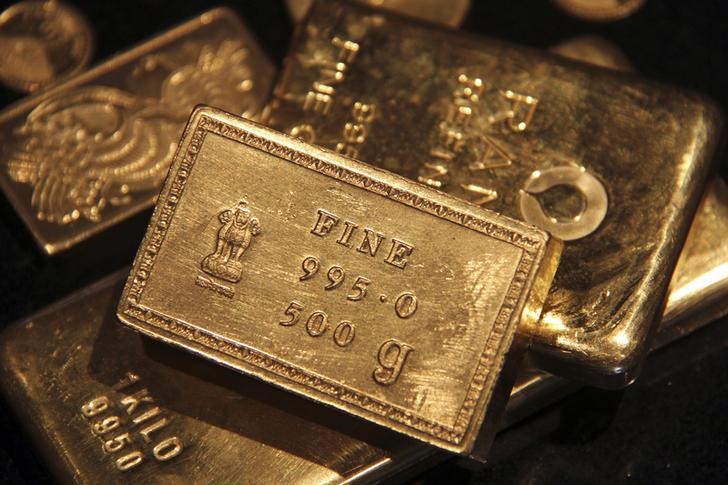By Barani Krishnan
Investing.com - It might have been an overwhelming year for inflation but it was certainly an underwhelming one for gold, one of the most popular hedge against price pressures known to investors.
With readings for the U.S. Consumer Price Index and the Federal Reserve’s preferred inflation gauge — the core Personal Consumption Expenditures Index — both at 40-year highs, gold prices showed their first annual loss in three years.
U.S. gold futures’ most active contract, February, settled up $14.50, or 0.8%, at $1,828.60 an ounce on New York‘s Comex.
For the year, Comex gold fell 4.5% for its sharpest slump since 2015.
The slide also comes after a banner year for gold in 2020 that pushed bullion prices to record highs above $2,100 an ounce, delivering an annual gain of 22%. That rally, incidentally, was on the back of inflation concerns as U.S. budget deficits began hitting records from record Covid-19 relief spending.
Gold has traditionally been touted as a hedge against inflation, although that argument was weakened earlier this year as the yellow metal’s prices steadily fell in the face of ramping price pressures in an U.S. economy rebounding aggressively from the coronavirus pandemic. Often, gold fell at the expense of the dollar and U.S. Treasuries, which rallied on expectations of rate hikes by the Federal Reserve to tamp down inflation.
“The gold-inflation divorce of 2021 will certainly be hurting to bulls in the space who’d have expected last year’s love theme between the two to continue,” said Phillip Streible, precious metals strategist at Chicago’s Blueline Futures. “Honestly though, the writing for that break-up was already on the wall with the sell-offs in gold that we had seen since Q3 last year, and deepened through 2021.”
“That said, it doesn’t mean that the gold-inflation play will not reassert itself in the coming year,” Streible added. “The Fed is unlikely to have as many rate hikes as it thinks in the coming year and if employment slows again for any reason, hedging in gold could again become a theme. And that’s one reason why gold has come back to finish 2021 above $1,800 from this year’s low beneath $1,700.”
The Fed has announced an expedited timetable for ending its pandemic-era stimulus and intends to raise interest rates by as early as March, the first time in two years since the Covid-19 outbreak of March 2020.
The Fed has said it could have as many as three rate hikes in 2022 but that will depend on keeping inflation at 2% a year and unemployment ideally at around the 4% level that it defines as “maximum employment”.
The U.S. jobless rate soared to a record high of 14.8% in April 2020 after the Covid-19 outbreak, but fell back to 4.2% last month. But the Consumer Price Index grew by 6.8% in the year to November, its most since 1982.
News of rate hikes are almost always bad for gold. But if the inflation theme remains strong, then gold could still reach new highs. That’s what bulls in the space are counting on.
